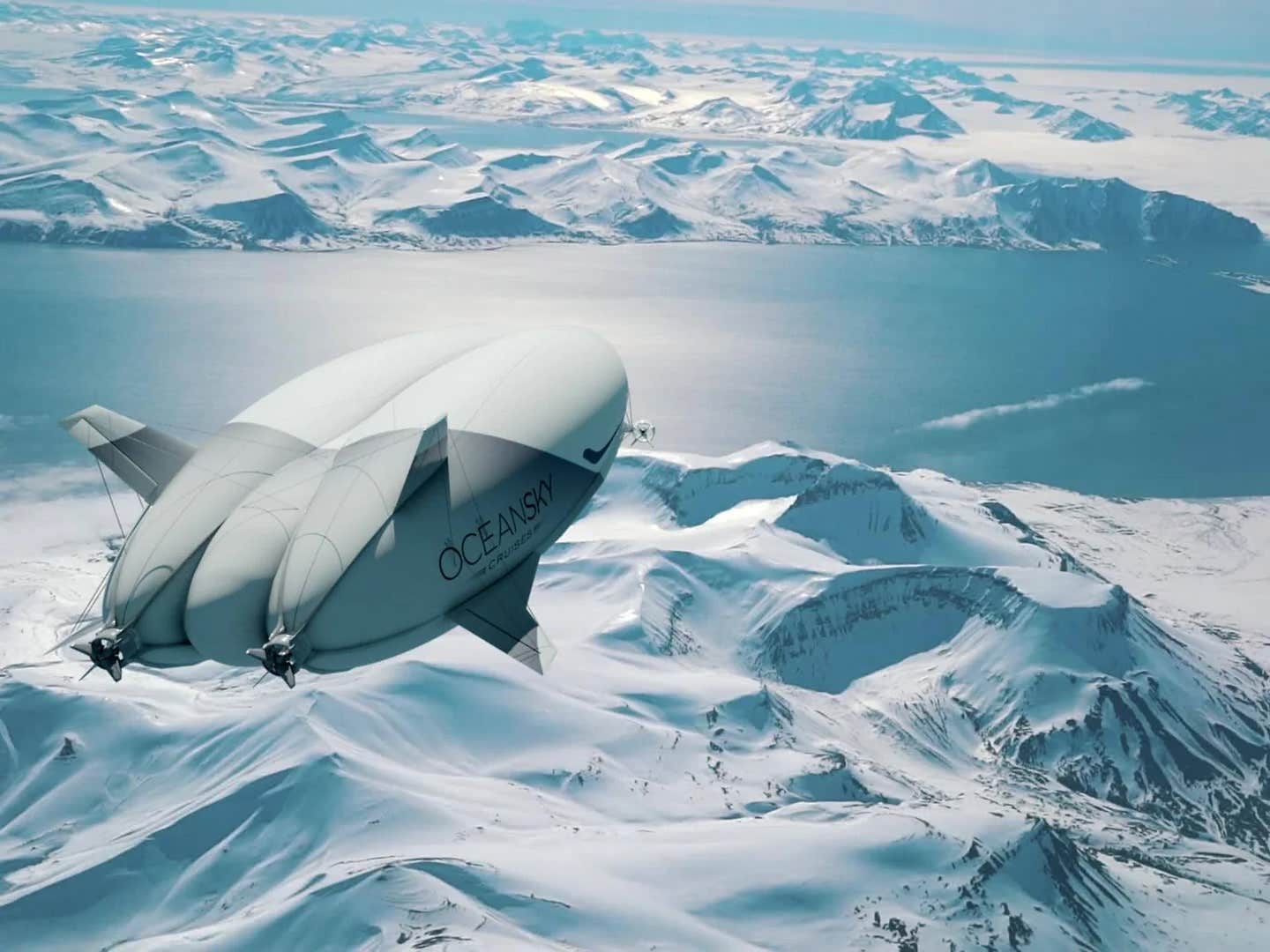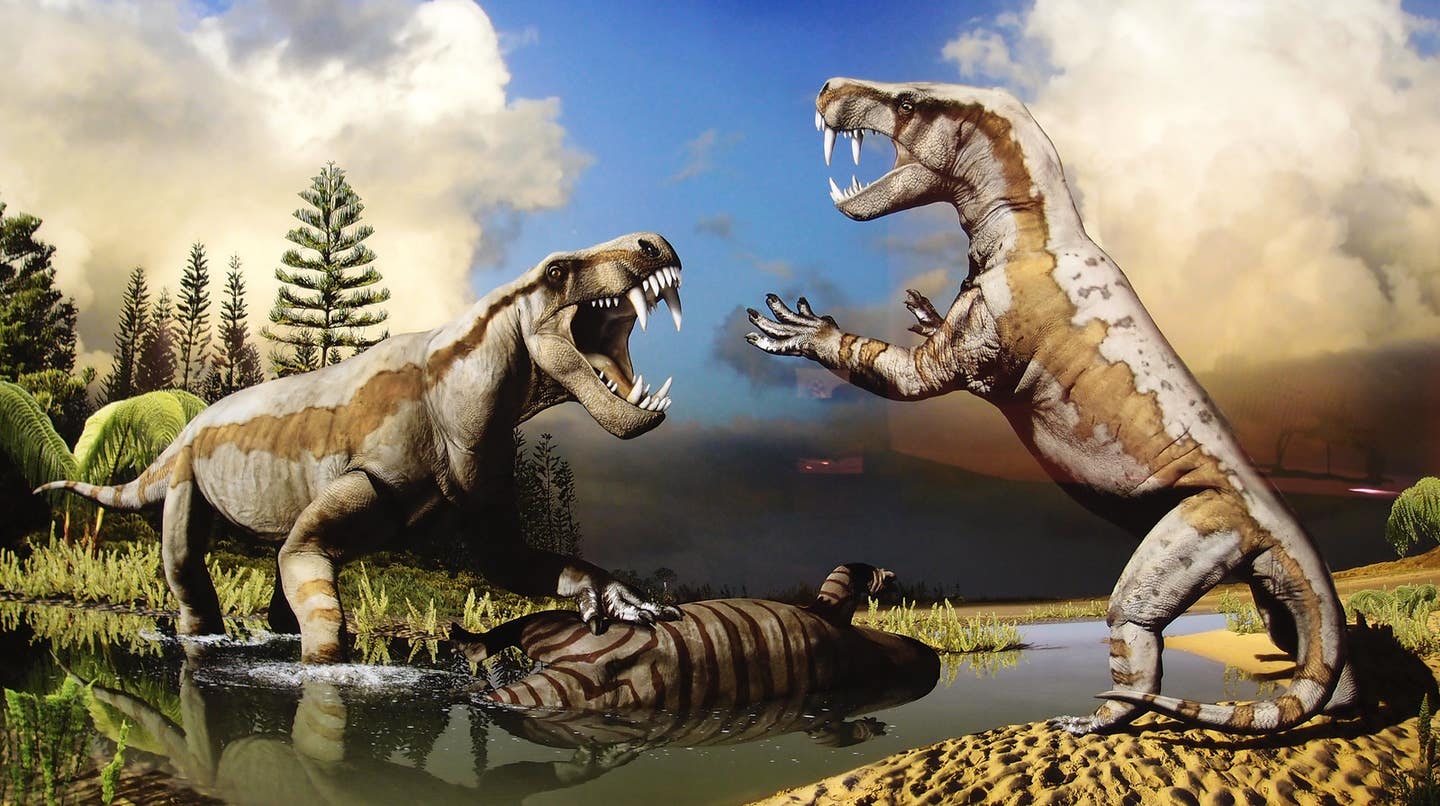Flying to the North Pole in a 21st century luxury airship
Airships will once again journey to the North Pole, nearly a century after Amundsen and Ellsworth’s successful polar trip on The Norge in May 1926.

OceanSky’s airship will fly over and land on the North Pole. (CREDIT: Ocean Sky Cruises)
Airships will once again journey to the North Pole, nearly a century after Amundsen and Ellsworth’s successful polar trip on The Norge in May 1926.
The 36-hour round trip, offered by OceanSky Cruises, will depart from Svalbard, one of the northernmost settled regions on earth. This location holds historical significance as the airship mast used by The Norge in the 1920s still stands there.
The journey will take you over Norway’s wild landscapes and Arctic icebergs. Flying at altitudes between 300m and 900m, you can enjoy the midnight sun while spotting polar bears, breaching whales, and other rare wildlife below.
Carl-Oscar Lawaczeck, OceanSky's CEO and co-founder, envisions this trip as the first of many expeditions to remote locations. “To utilize airships to the maximum, you want [to visit] an area that doesn’t have so much infrastructure, like Siberia or the Amazon, where it’s hard to get very deep into the wilderness,” he explains.
OceanSky is already inviting travelers to reserve their cabins for 900,000 Swedish Krona ($140,837), with a 5% down payment. However, many details, including the departure date and the specific airship, are still to be determined. Several companies are developing lighter-than-air (LTA) technology, but none have yet released a production model.
Lawaczeck mentions the 320-foot-long (97.5m) Airlander 10, manufactured by the UK-based Hybrid Air Vehicles (HAV), as their preferred choice. This airship is noted as the biggest aircraft in the world, measuring 98m long, 43.5m wide, and 26m high, with a payload capacity of 10 tonnes.
Related Stories
Airships have significant potential in the aviation market. They are relatively safe because they use helium, which is inert and not combustible like hydrogen. Even if the hull is punctured, the low-pressure differential means the helium would escape slowly, allowing the airship to return to base for repairs.
Due to their slow speed—Airlander 10’s maximum speed is 111 km/h compared to a Boeing 737’s cruising speed of over 1040 km/h—the potential for damage in a crash is reduced. Lawaczeck, who has a background as a pilot in various aviation sectors, says, “By travelling slowly and landing slowly, you’re mitigating the worst risks with landing and take-off. And that’s where the biggest risks are.”
Airships can take off and land from almost any flat surface, eliminating the need for runways or airports. Airlander 10 can stay airborne for five days and travel 4000 nautical miles. This aligns with the luxury travel sector’s “leave no trace” philosophy. Unlike cruise ships that break ice floes to reach the North Pole, airships glide quietly overhead, leaving the environment untouched.
Airships also present an opportunity for the aviation industry to reduce its carbon footprint. The buoyancy of helium counteracts most of the airship’s weight, requiring less fuel to stay airborne and offering a 75% reduction in emissions compared to traditional aircraft. OceanSky plans to offset its carbon eTraveling to the North Pole in a new 21st century luxury airshipmissions and use clean fuels like biofuel or EcoPar Ultra Clean. The latter, made from natural gas, emits 90% fewer carcinogenic substances and up to 50% less nitrogen oxide than regular diesel.
Future developments include leveraging solar and hydrogen fuel cells and transitioning Airlander’s engines to hybrid and electric versions. HAV is partnering with the University of Nottingham to produce a fully electric, zero-emission Airlander by 2030. Combining several aerospace technologies, Airlander is more reliable than any single type of aircraft. It offers a low vibration and reduced turbulence experience, making it ideal for aerial safaris and quiet residential area pickups.
The long range and high payload capacity of airships also have defense, security, commercial, and logistics applications. They can transport goods and personnel to areas without infrastructure, support surveillance missions, and deliver aid to remote communities. Shipping by airship is expected to be less risky and faster than sea freight.
An independent report by Renaissance Strategic Advisors in 2017 estimated the market for primary Airlander sales over the next 20 years at $46 billion, representing more than 500 aircraft. Over £150 million ($263.2 million) has been invested in Airlander’s development by the UK, EU, and US Department of Defense. Crowdfunding through CrowdCube has also raised £1,900,490 from 1629 investors.
The technology is scalable, with HAV’s Airlander 50 capable of carrying a 60-tonne payload and accommodating 200 passengers. The Airlander 200 is designed for a 200-tonne payload. “We can build a ship that has a thousand tonnes in payload with today’s technology, but it’s going to take a lot – maybe decades – before we get there,” says Lawaczeck. He notes that as capacity doubles, the cost per ton reduces by 75%.
In pursuit of military contracts, Lockheed Martin tested its Hybrid Air Vehicle P-791 in 2006, designed for intelligence gathering or transport. The first commercial model is ready for construction and FAA certification. French company Flying Whales is developing a sleek, torpedo-shaped dirigible to connect remote areas with the global economy.
Worldwide Aeros Corp., founded by Igor Pasternak, has been producing airships and related systems for 25 years and is now focusing on its Aeroscraft airship, with the largest model carrying 455 tonnes.
Lawaczeck initially explored LTA technology for the cargo sector but found experiential travel a more viable way to advance the industry. Airships offer a productive and comfortable travel experience, allowing passengers to do yoga, work, dine, or sleep during the journey. The low altitude and lack of pressurization enable easier breathing, deeper sleep, and better food and drink enjoyment.
OceanSky’s cabin design, by Design Q, offers a superyacht feel in the skies. Each suite includes a queen-size bed, private bathroom, and floor-to-ceiling windows. Common areas like the infinity lounge provide space for dining and relaxation, with dynamic seating that transforms throughout the day. Materials and furnishings are luxurious, and innovations in light and heating are in development.
The airship experience combines comfort, luxury, and adventure. Future itineraries may include a Tropic of Capricorn journey, covering destinations like Botswana’s Okavango Delta, Namibia’s red sand dunes, and Victoria Falls. Whether you’re exploring remote wilderness or enjoying a wine-tasting trip through Champagne, airships bring a unique and luxurious travel experience. As Lawaczeck puts it, “Flying aboard an airship is basically bringing your luxury hotel with you.”
Note: Materials provided above by The Brighter Side of News. Content may be edited for style and length.
Like these kind of feel good stories? Get The Brighter Side of News' newsletter.
Rebecca Shavit
Science & Technology Journalist | Innovation Storyteller
Based in Los Angeles, Rebecca Shavit is a dedicated science and technology journalist who writes for The Brighter Side of News, an online publication committed to highlighting positive and transformative stories from around the world. With a passion for uncovering groundbreaking discoveries and innovations, she brings to light the scientific advancements shaping a better future. Her reporting spans a wide range of topics, from cutting-edge medical breakthroughs and artificial intelligence to green technology and space exploration. With a keen ability to translate complex concepts into engaging and accessible stories, she makes science and innovation relatable to a broad audience.



